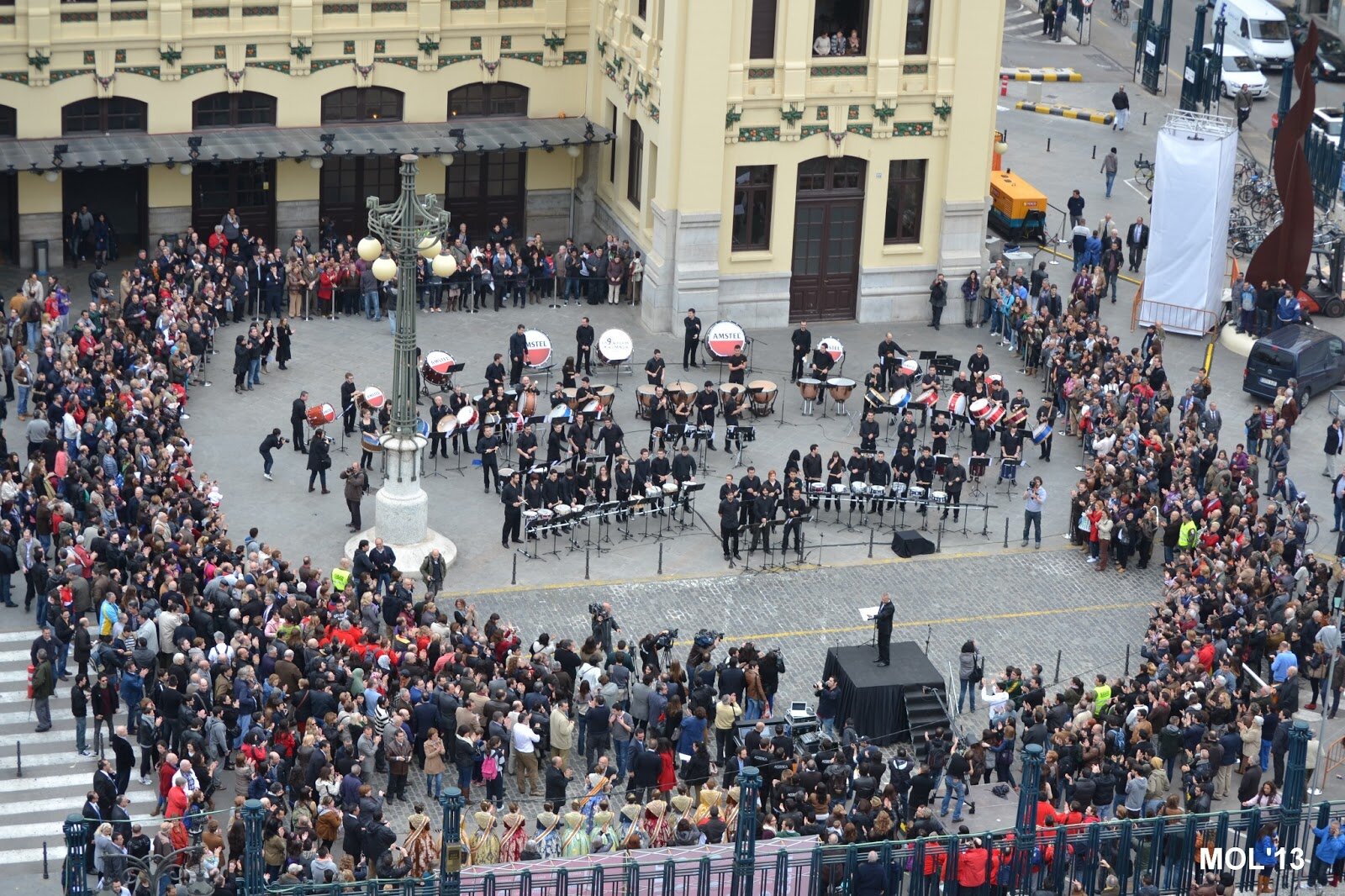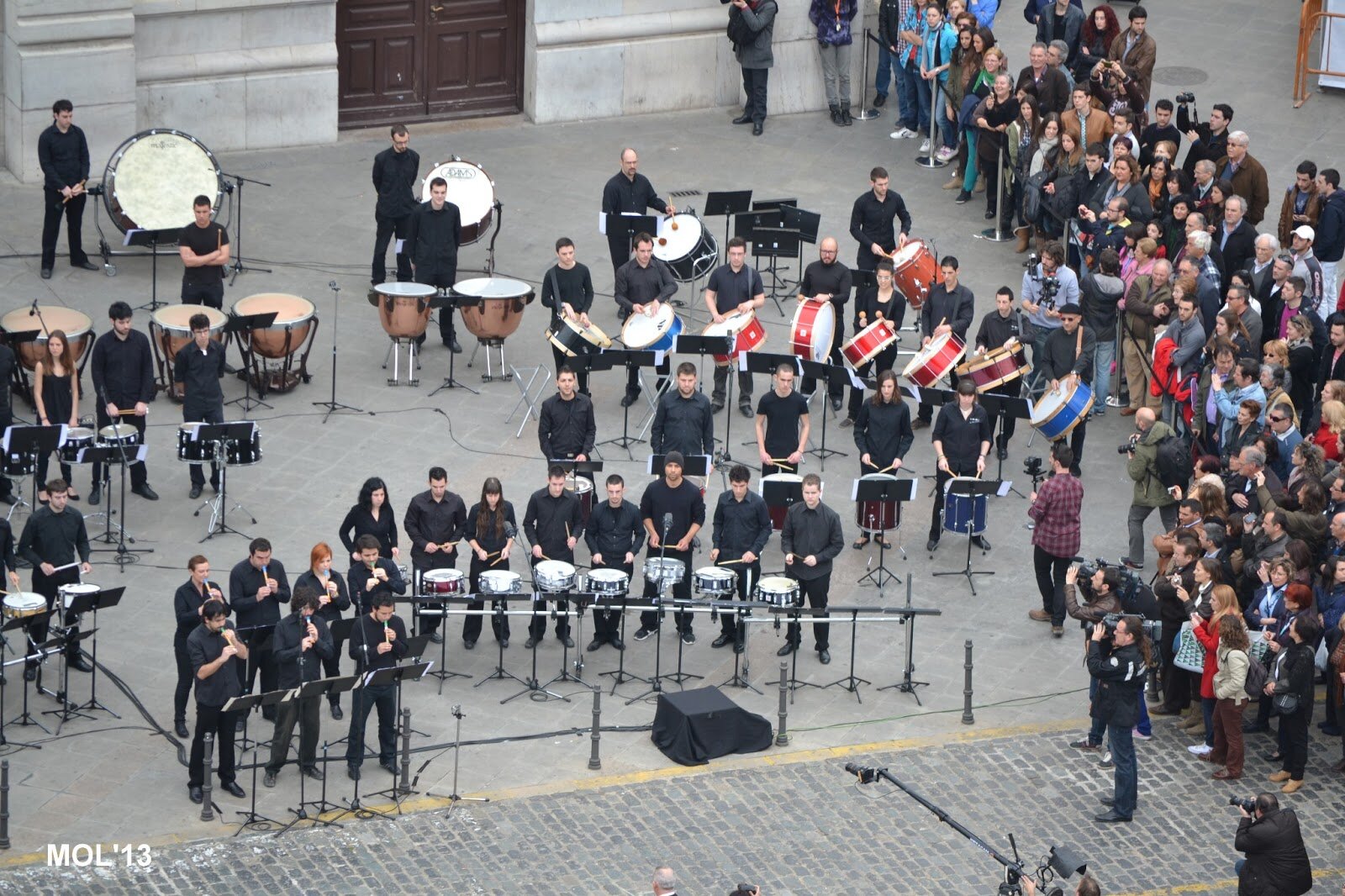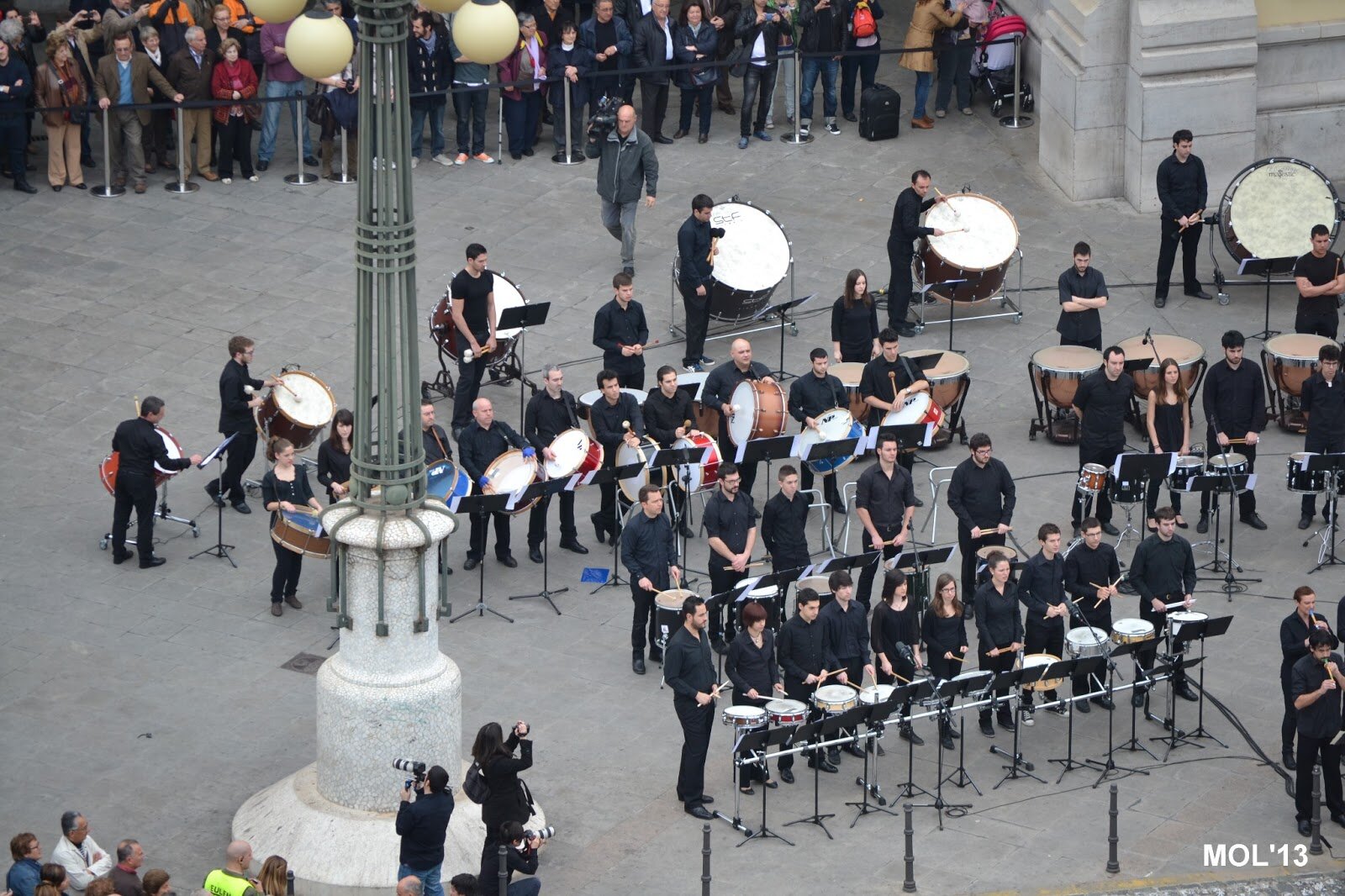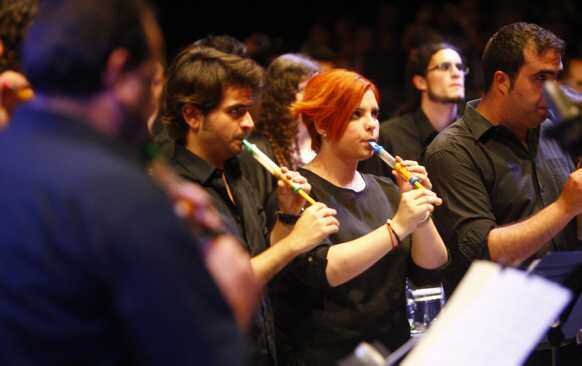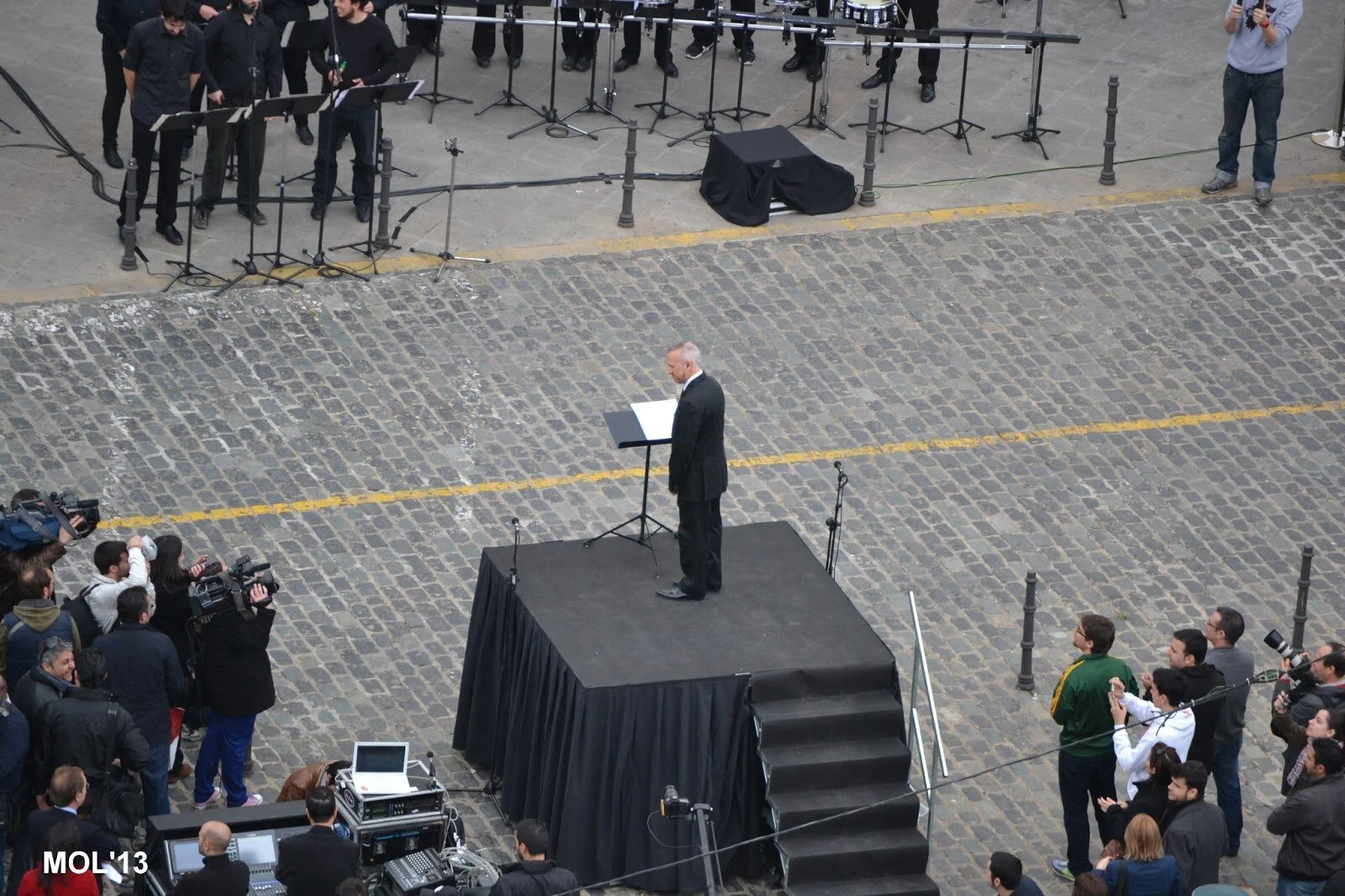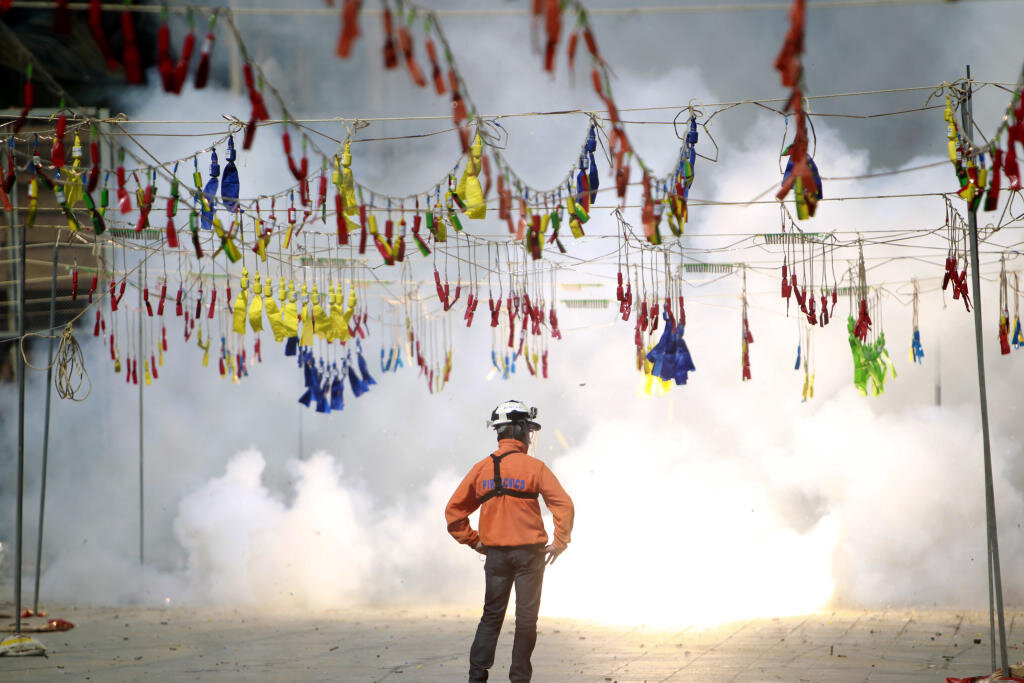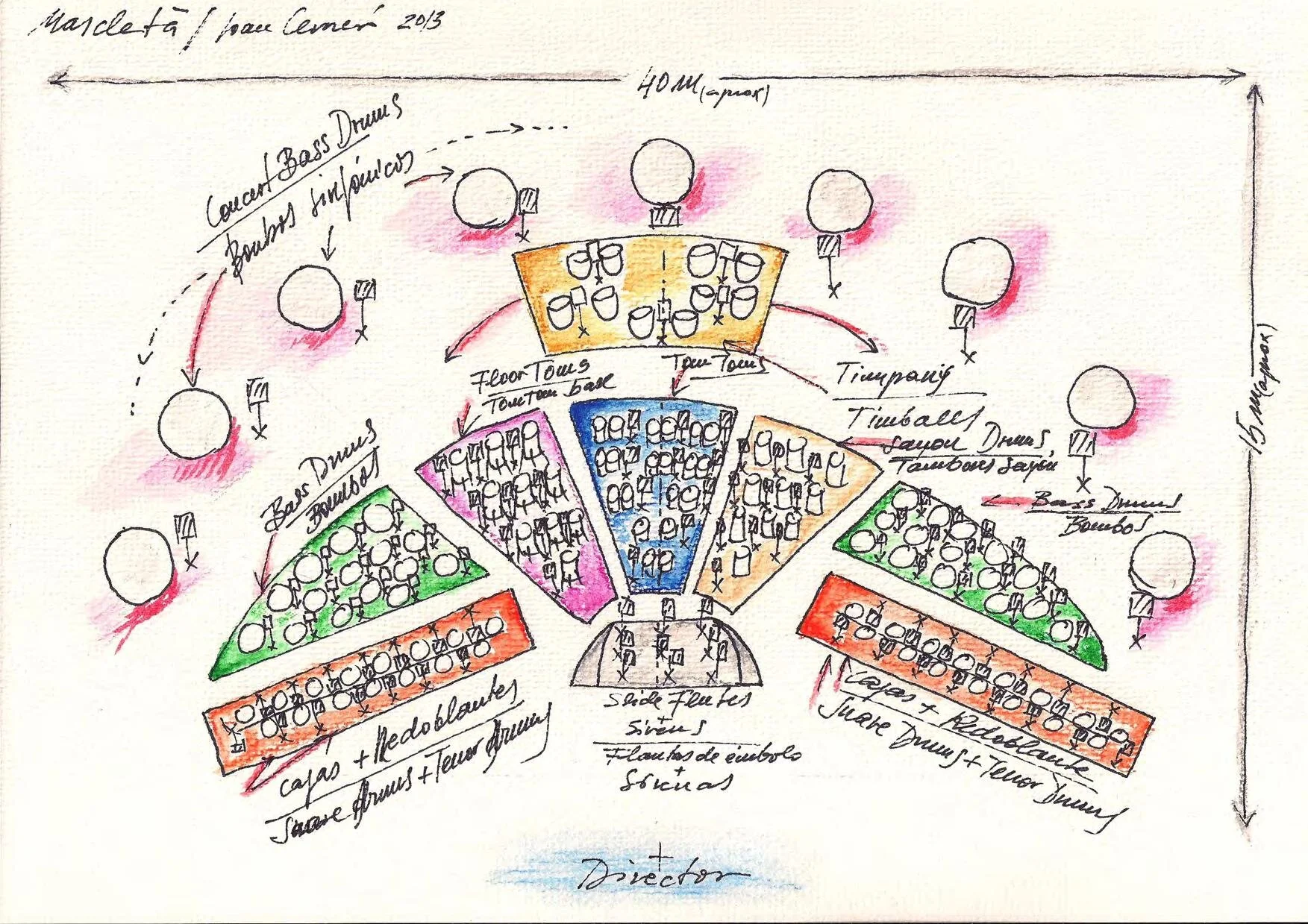SPECIAL PROJECTS
Steel heart (2015)
For Rubens Tube device, Chefs, 42 Paellas & Wind Symphony
Cor d’Acer (2015)
Para dispositivo de Tubo de Rubens, cocineros, 42 paellas y banda sinfónica
Original compositions for the project by Joan Cerveró
Banda Primitiva de Llíria, Joan Cerveró, conductor
Duration 70’
Premier 29, Noviembre, 2015 | Theater of the Banda Primitiva de Llíria, Llíria, Valencia
Sound Engineer, Vicent Sabater
Production La Fallera, La Mujer del Presidente, Banda Primitiva de Llíria & Moderna Música
This project, sponsored by the food firm La Fallera (mainly rice), presented the first paella in the world made with sound, with music. This project is inspired by the 'Rubens' Tube' invented by the German scientist Heinrich Rubens in 1905 to graphically demonstrate the relationship between a sound wave and the pressure of a gas. This seven-tube installation allows us to visualize sound waves through of holes that allow gas and fire to escape, producing a seductive visual effect where the effect of the music is reflected in the fire itself.
For this project I choosed and composed diverse works, some with traditional notation others with graphic, that the amateur Banda Primitiva from Llíria (Valencia) integrated for this concert of 80 musicians, performed live in a concert, based on the indications of the master paellero Rafa Margós, who in turn cooks a traditional and enormous paella with the fire caused by the music of the band.
Here the “law of fire” prevailed. Rafa Margós gave us the necessary temperatures, intensity and the cooking times of each minute of the process and that information has guided the choice of music or the compositions, which combines traditional pieces from the band repertoire and pieces composed for the chance.
The concert was held on November 29, 2015 in the Teatro de la Banda Primitiva of Llíria, knowed as ‘El Clarín’, with the general title 'Paella to Music' since this was the generator of caloric energy. A unique concert where for the first time in history a rice with music was cooked. Tradition and innovation united to honor music bands, one of the fundamental pillars of Valencian culture.
The serpentine was built by Espada & Santacruz Studio, an hybrid creative studio located in Madrid that develop innovation projects thanks to crafted technology, evocative design & stunning visuals.
Notes about the compositions
1. L’esperit del foc (The spirit of fire) [Fire]: initial sound effect produced by the controlled manipulation, through the score, of cellophane papers. It all starts in the dark, producing this suggestive sound in a pre-established order: first winds, to pass later to the entire band except the percussion that will make a very soft sound with the kick drum and timpani. (Cook lights the fire and adds the oil and salt)
2. Lluna de colors (Colored moon) [Colors]: in this composition what is already being interpreted is a score where what is presented are the colors of the music. If the paella is yellow, red, green ... (oil, paprika, vegetables, etc.), the music will offer a play of colors, rhythmic and melodic at the same time, adapted to the needs of the cook. This is based in the melodies of the Cervero’s composition Stanzes.
3. Sentint l’aigua d’amor (Feeling the water of love) [Water]: the musicians will perform a score whose material will be based on water and its sound adaptation. Great authors have done it, Debussy, Ravel, Turina, etc. In this case, the effect will be real since the water will "fall" and produce effects that, combined with other instruments, will remind us of the importance of this liquid element for making the paella. This composition is a new performing version of the work Water Music specially made for this occassion.
4. Veles e vents (Sails and winds) [Wind]: it is here that the band players, essentially from the wind, take a very particular role as they will make their instruments sound in an unconventional way. The wind is the protagonist but in its original, primal form, without transformation, without melodies: whispers, currents, soft breezes, etc. everything produced from within the instruments, from the highest, the piccolo, to the lowest: the tuba.
Graphic Score of Veles e vents (Sails and Winds) (2015) by Joan Cerveró, for amateur Wind Symphony
5. Un arròs (A rice) [The rice and the people]: necessary arrival place where the musicians “will perform with rice”: the rice will be shaken, shaken, turned, precipitated, shocked, etc. To do this they will use different containers and ways of "being sounded" that implies the construction of small instruments that each musician must interpret. Music can also be made with rice.
6. Cor d’acer (Steel heart) [Paellas]: at a certain moment several paella “descend” from the stage ceiling and “settle” in it. The musicians will perform a work specially indicated for the paellas at the same time as some of them, due to the effect of the percussion they will begin to spin. The composition is reminiscent of gamelang music and, despite its appearance, is delicate and sinuous rhythmic. Paella and its heart of steel becomes the true protagonist here. For the initial proposal of this project, 4 battens of the grill will be used. When all the battens descend, the entire stage will be filled with paellas. There will also be musicians who will interpret the score with individual paellas held by hand.
Percussion:
12 paellas of different sizes (treble, middle and bass)
Metals: 6 paellas of different sizes (medium and low) |
Winds 1: 6 paellas of different sizes stockings (medium) |
Winds 2: 6 paellas of different sizes medium (treble and medium) |
Individual: 12 small paellas (sharp)
In total there will be 42 paellas on stage.
7. Les nits que van fent la nit (The nights that go by at night) [The night]: the paella is already cooked and the calm and tranquility return to the container. The music will indicate this happy conclusion with chords and sounds that will be performed in many cases with unconventional notation. The result will be thousands of sounds scattered like aromas and wishes among all those who have elaborated, cooked the paella.
8. … and turns to life (… And turns to life) [End]: represents the end and the beginning since at a certain moment the volume, speed and musical emotions rise and rise in a final spasmodic that will be used in cooking to get a lot of fire and be able to make what in paella is known as "socarrat". A desired ending. A party of music and sensations.
The titles of the pieces have been taken from phrases or verses of well-known Valencian poets of all times, although in no case have they been taken as inspiration or motifs, but also wanted to pay tribute to the “veu del poble ”. Poets of all times have written and sung, to life, to death, to traditions, to the party, to music and to the joy of celebrations, their spirit is therefore also in this musical project around the Paella.
Here are the poets and writers honored:
L’esperit del foc: Salvador Jàfer (El Ràfol de Salem, La Vall d'Albaida, 1954)
Sentint l’aigua d’amor: Xavier Casp i Verger (Carlet, Valencia, 1915 - Valencia, 2004)
Lluna de colors: Vicent Andrés Estellés (Burjasot, Valencia, 1924 - Valencia, 1993)
Veles e vents: Ausiàs March (Beniarjó, La Safor, 1397 - Valencia, 1459)
Un arrós: Josep Piera i Rubió (Beniopa, Valencia, 1947)
Cor d’acer…: Ausiàs March (Beniarjó, La Safor, 1397 - Valencia, 1459)
Les nits que van fent la nit: Vicent Andrés Estellés (Burjasot, Valencia, 1924 - Valencia, 1993)
… and turns to life: Jaume Pérez Montaner (L’Alfàs del Pi, Marina Baixa, 1938)
The popular wind symphony repertoire works that was performed at the concert was:
L’entrá de la murta, pasodoble - (The entrance to the myrtle) by Salvador Giner | La Leyenda del beso, intermedio - (The Legend of the Kiss) by Reveriano Soutullo & Juan Vert | Suspiros de España, pasodoble - (Sighs of Spain) by Antonio Álvarez Alonso | La Verbena de La Paloma, preludio - (The Fair of the Virgin of la Paloma) by Tomás Bretón | La revoltosa, preludio | (The Troublemaker) by Ruperto Chapí | Es chopà 'hasta' la Moma, poema sinfónico (It's sopped 'up' the Moma) by Salvador Giner | Agua, azucarillos y aguardiente, pasodoble - (Water, Swets & Aguardiente) by Federico Chueca | El tambor de granaderos, preludio - (The Grenadier Drum) by Ruperto Chapí | La boda de Luis Alonso, intermedio - (Luis Alonso's wedding) by Gerónimo Giménez | Una Nit d'Albades, poema sinfónico - (A Night of Albaes) by Salvador Giner.
Photos
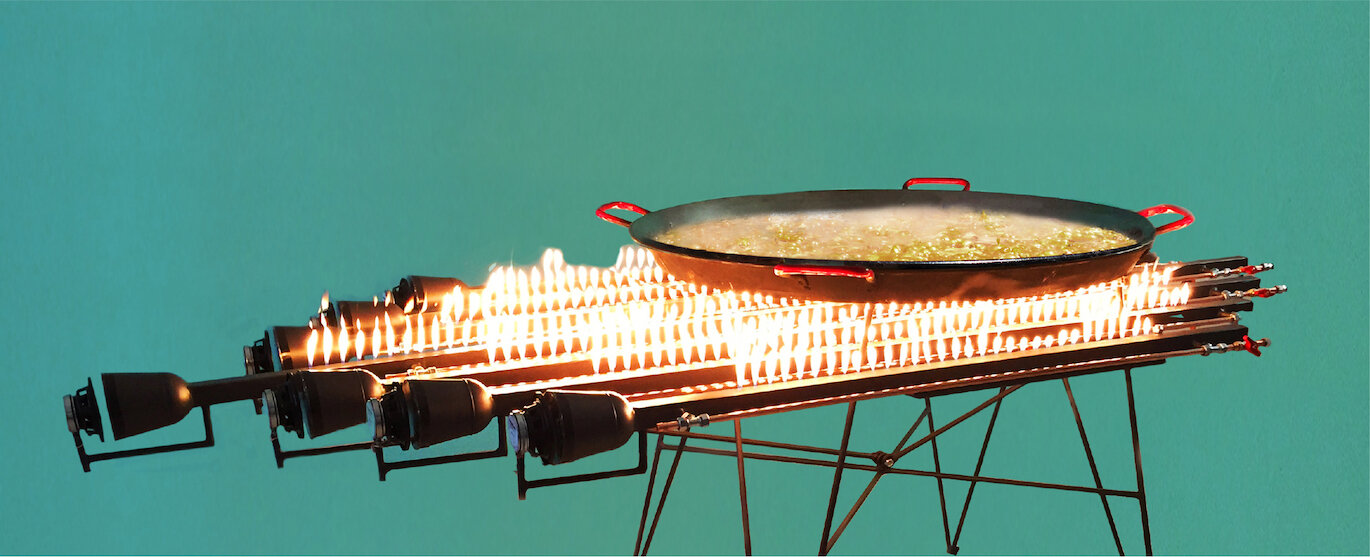
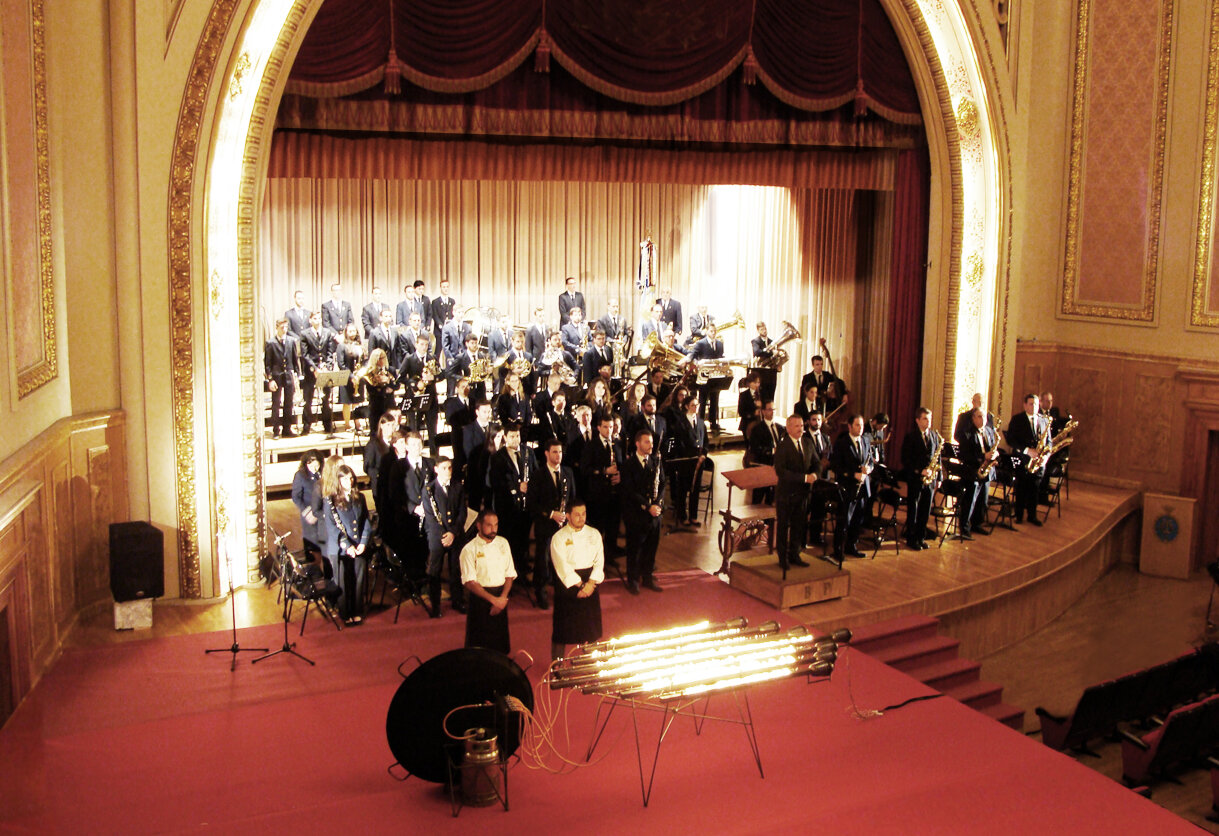
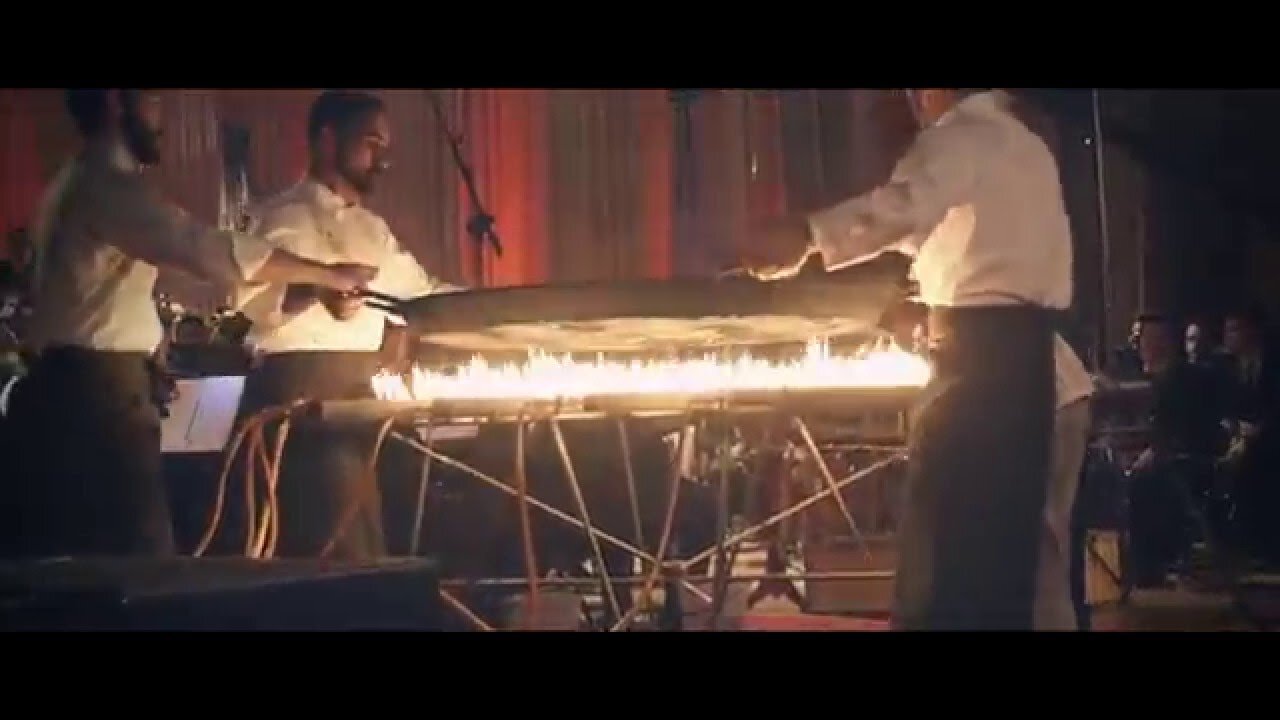
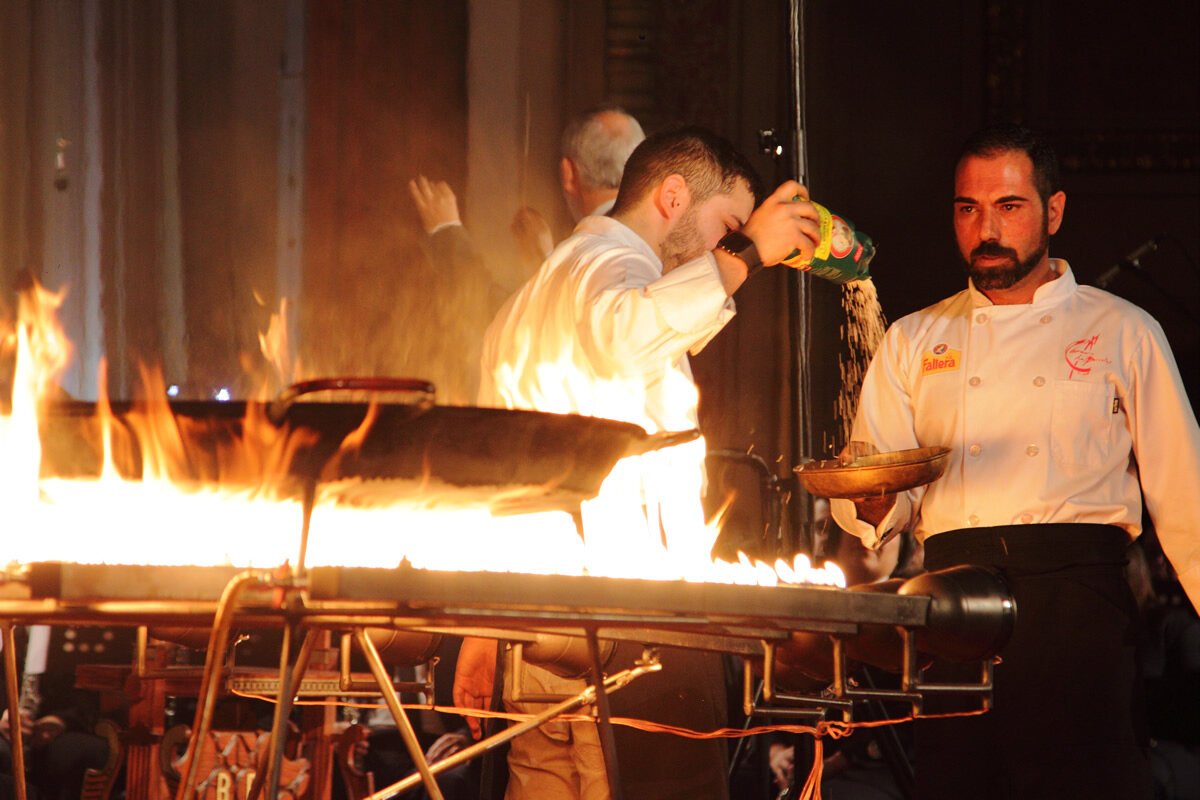
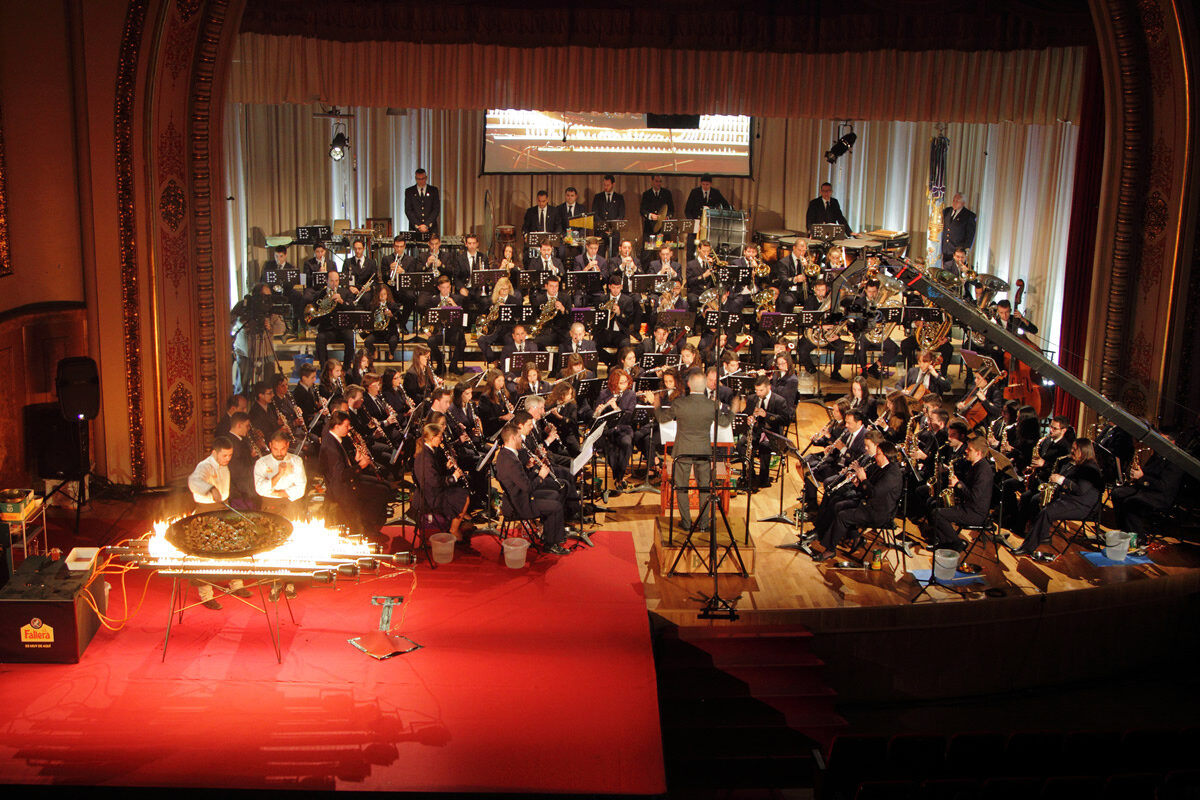

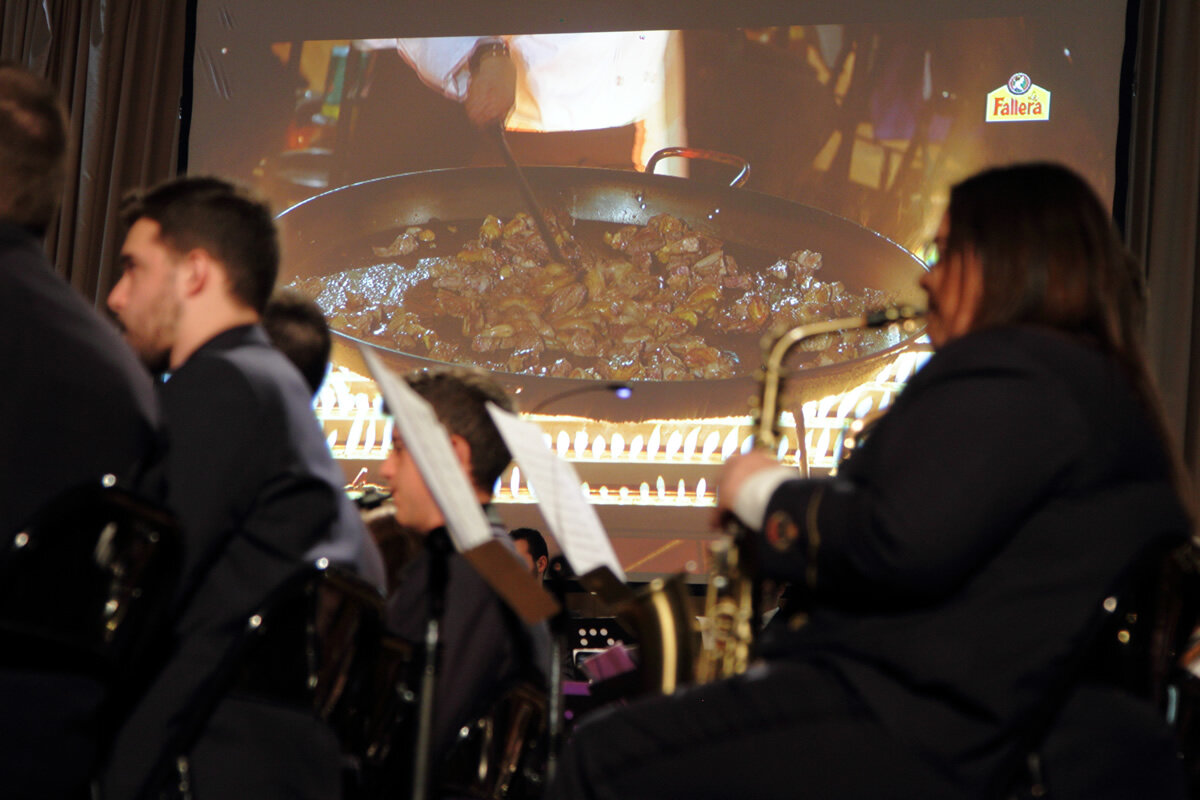
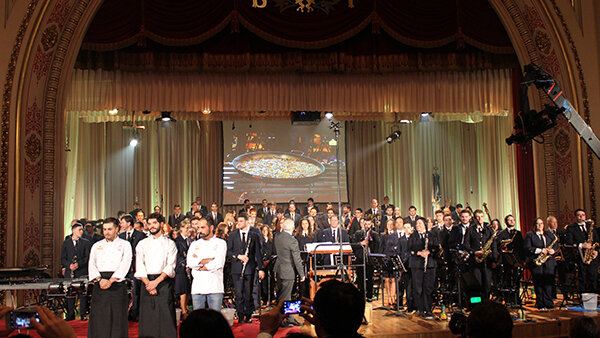
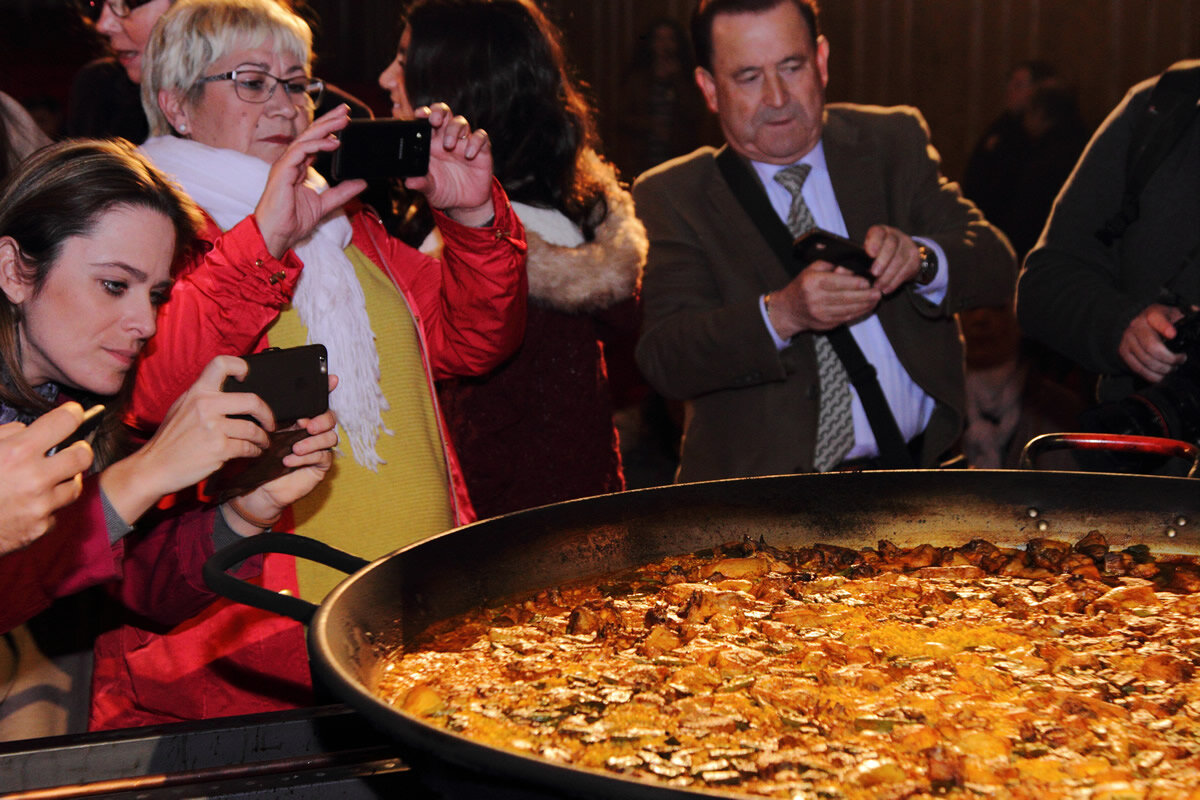
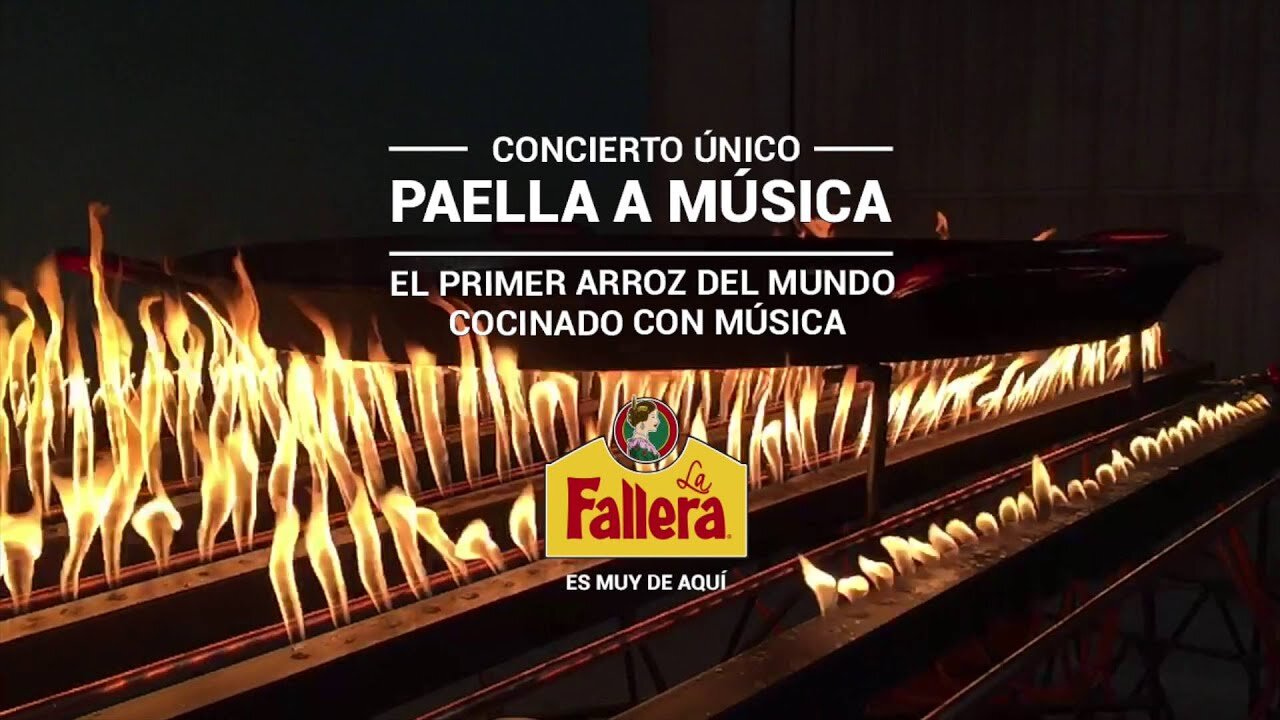
@manisesonline
symphonic mascletà (2013)
[9th Symphony of Vicente Caballer]
For 70 to 300 percussionists
Mascletà Simfònica (2013)
[9ª Sinfonía de Vicente Caballer]
para 70 a 300 percusionistas
Original compositions for the project by Joan Cerveró
Percussion Ensemble, Joan Cerveró, conductor
Duration 6’
Premier 7, March, 2013 | Esplanade of the North Train Station of Valencia
Sound Engineer, Vicent Sabater
Production Amstel, Publips & Moderna Música
Musical texture example | Page 24 | Symphonic Mascletà
The gestation of this work is produced from a commission made for the Fallas de Valencia in 2013. The Amstel company was looking for a theme that would unite music and fireworks. It was evident that the result would be the realization of a sound experiment that turned noise into music, into organized sound and this was a mascletà. Made with a musician and sound technician Vicente Sabater, after many investigations and many listening visits and suggestions, including those of the dean of Valencian fireworks Vicente Caballer to whom the work is dedicated, the Mascletà Simfònica was premiered on March 7, 2013, on the esplanade of the RENFE, Knowed as the North Train’s Station in Valencia. Its duration is 6 ', like a standard mascletà, and its structure maintains the fundamental elements of any of them: "Start", a "U" of displacements, thunder in the "air" and on "land", the "retentions", a "cantarella" or explosion usually stands out above the rest and announces the "apotheosis", with its "entrance to an earthquake" and the "rise" which is the union of "land and air", the moment of union between the "earthquake" and the "bombardment" (air). It concludes with the "signature" and the three "final thunderclaps". This mascletà also has two hidden "tributes", one dedicated to Stravinski where eight bars of his The Rite of Spring are played celebrating the 100th anniversary of the premiere of this ballet are performed, and a quote belonging to the Ode to the Joy of Beethoven’s 9th Symphony, a plea and a wish for peace.
All those who have attended a mascletà can, or have been tempted to describe it as "music", and it is from this paradox that this meeting was held, which, not far from the music audiences, at first stops be based on classical and contemporary music. Not far from his proposal are John Cage's theories on noise, sound or sonic misplacement; nor on the other hand does he move away from the Duchampian Ready-Made or from a Fluxus action, in his attempt to unite life and art. That is why the Symphonic Mascletà is more than a work, more than a party, it is an attempt to seek beauty in the many situations of life and of course to direct our ears to total listening, to listening to the world such and as it is, just as we have.
For the rest of the world may be a mascletà is noise, but for Valencians, a mascletà is a symphony.
Videos
“Symponic Mascletà”, a case study by Emilio Valverde
Making Of “Symphonic Mascletà”
Visual and sound sketches of instruments’ disposition for the“Symphonic Mascletà” (2013)
"Symphonic Mascletà", Esplanade of North Train Station in Valencia (Spain), March 7, 2013
PHOTOS
